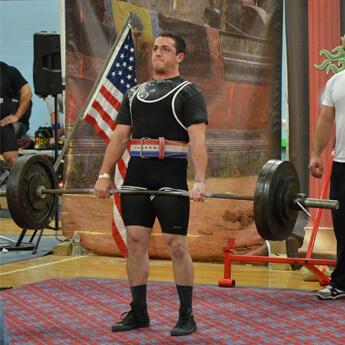Sprint Interval Training: Burn 40% More Fat Than HIIT in 60% Less Time
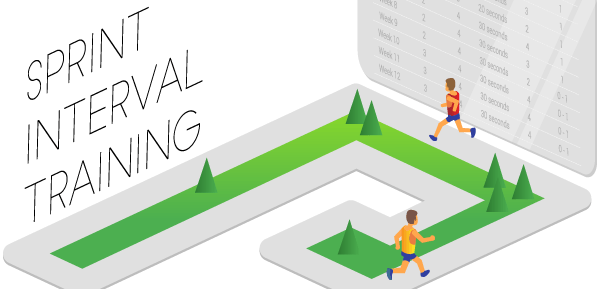
From fitness gurus and gym trainers to that one colleague who never shuts up about Crossfit, all will tell you exactly what you need to do to lose weight.
We all know the benefits of exercising - despite how convincing all these so-called experts may sound, weight loss comes down to two things: 1) What you consume, and 2) What you do. That’s it.
The most obvious thing people do when they want to lose weight is cardio. HIIT has been one of the top fitness trends year after year and is commonly touted as the best way to lose weight. Instead of following the guidance of the misinformed, I conducted research to find out the facts.
The investigation compared sprint interval training, high-intensity interval training (HIIT), and moderate-intensity continuous training (MICT). It consisted of a meta-analysis of over 70+ scientific studies to uncover the answers to these two questions:
- What type of cardio exercises is best at burning body fat?
- Which of these forms of cardio are the most time efficient?
Key Conclusion
The data shows that sprint interval training led to a 39.95% higher reduction in body fat percentage than HIIT. Additionally, SIT participants exercised for 60.84% less time than HIIT.
All Findings
Sprint interval training (SIT) vs High-intensity interval training (HIIT)
- SIT resulted in a 39.59% higher reduction in body fat percentage than HIIT.
- SIT significantly outperformed HIIT in Body Fat Percentage (BF%) reduction while requiring 60.84% less time spent exercising than HIIT.
- SIT participants spent 81.46% less time sprinting in comparison to time spent doing high-intensity intervals of HIIT.
- On average, SIT conducted 10% fewer workouts per week and these workouts were 44% shorter in comparison to HIIT.
- During these workouts, the SIT group did 4.68% fewer sprints than the HIIT participants did their high-intensity intervals.
- These sprints were 85.64% shorter in duration than the high-intensity intervals of the HIIT group.
Sprint interval training vs Moderate-intensity continuous training (MICT)
- SIT resulted in a 91.83% higher reduction in body fat percentage than MICT.
- SIT significantly outperformed MICT in Body Fat Percentage (BF%) reduction while requiring 71.17% less time spent exercising.
- SIT participants conducted 15.54% fewer workouts every week on average compared to MICT.
- These workouts for SIT were 60.12% shorter than MICT workouts.
The investigation
Studies were found by using specific boolean search queries in PubMed. Specifically, we used keywords to find studies that compared either two of the three training modalities or all three. If the study did not compare one of these three modes of training against one another but did provide other forms of variations in the training, it was included. After analysing several hundred studies, many studies were eliminated leaving the meta-analysis with approximately 75 studies. From that, studies that assessed adiposity were used to create the data and conclusions you see within this article.
- 75 Studies that compare either two of or all three of SIT, HIIT, and MICT.
- From these studies, the protocols of each training mode were identified and documented.
- The averages for each parameter of the protocols were calculated for their respective training mode.
- The percentage difference in the averages of these metrics was then calculated between SIT vs HIIT, SIT vs MICT, and HIIT vs MICT to determine the difference in effectiveness and efficiency.
Three forms of cardio: How are they different?
All three cardio regimens, SIT, HIIT, and MICT differ in their duration and intensity. Although it is easy to understand the difference in duration by using universally understood measures of time, how do we assess the intensity?
To do this, researchers would use testing equipment to consistently track specific metrics that equal to a desired level of intensity. They would asses things like the percentage of maximum heart rate (HRmax) or percentage of maximal oxygen uptake (VO2max).
To simplify this, we will be classifying the level of intensity on a scale of 1-10 using the modified relative perceived exertion (RPE) scale. The chart below shows The Borg Scale of Perceived Exertion in comparison to a modified RPE scale that goes from 1-10. It shows how one’s breathing may be at what level, an estimated percentage of maximum heart rate (MHR), and what type of exercise is done at that level.
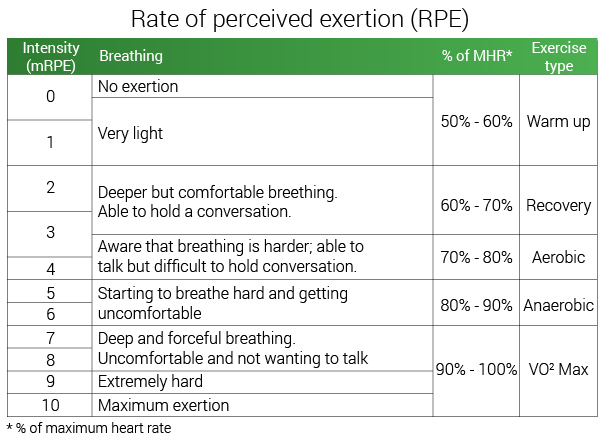
In future visualisations of the different protocols, the y-axis will be this modified RPE scale to demonstrate the level of intensity and the x-axis will be time, allowing you to easily see the difference between these protocols.
What is sprint interval training?
Sprint Interval Training is actually a sub-type of HIIT but differs drastically in a few ways. In SIT, the intervals of higher intensity training consists of all-out sprints where you are giving 100% of your effort. Because of this extreme intensity, the duration of these intervals is very short. The workout itself has to be much shorter simply because working at this level of intensity is difficult to sustain.
The rest intervals in SIT will generally be longer or equal to than that of a HIIT workout and usually have a much lower work-to-rest ratio.
A common example of a SIT protocol
- 4-6 30-second sprints at an intensity of 10.
- Rest for 2-4 minutes after each sprint.
- Rest period consists of either fully resting (intensity of 0) or low-intensity active recovery such as walking (intensity of 1).
- Repeat this workout 2-3 times per week.
Sprint interval training workout: the average protocol tested
Through the analysis, the studies analysed used a range of anywhere from a 1:9 work-to-rest ratio to 1:3 work-to-rest ratio. The combined average of all the tested sprint interval training protocols used in this meta-analysis was:
- 8 sprints per workout (rounded up from 7.68)
- 27.6 seconds sprinting duration
- 2 minutes and 44 seconds of rest after each sprint
The intensity levels during SIT on the modified RPE scale were:
- Average sprint interval intensity = 10
- Average rest interval intensity = 1
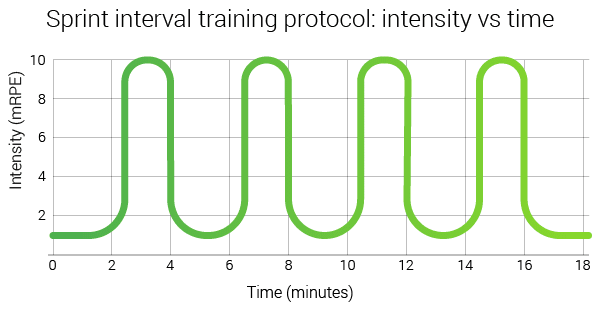
When visualised, it is clear that Sprint Interval Training is less of an endurance exercise and more of a maximum effort challenge. Even if the workout lasts X minutes, you are actually only doing 2 minutes of actual demanding work. The other Y minutes of the workout are spent resting at an extremely low-intensity.
What is high-intensity interval training?
High Intensity Interval Training workouts generally last around 30-40 minutes although they can be a bit shorter. The “high-intensity intervals” are typically in the 2-4 minute range. Although that may be much longer in length than the sprints in SIT, the intensity of these intervals are lowered in order to compensate for the longer duration.
Typically, HIIT operates at a higher work-to-rest ratio than SIT.
A common example of a HIIT protocol:
- 4-8 sets of 2-4 minute sprints at an intensity of 6-8
- Rest for 1-3 minutes after each sprint
- Rest period consists of active recovery at an intensity of 1-3
- Repeat this workout 3-4 times per week
High-intensity interval training workout: the average protocol tested
Through the analysis, the studies used a range of anywhere from 1:2 work-to-rest ratios to 2:1 work-to-rest ratios. The intensity of the recovery intervals does tend to be slightly higher than that seen in Sprint Interval Training.
The combined average of all the tested high-intensity interval training protocols used in this meta-analysis was:
- 8 sprints per workout (rounded down from 8.05)
- 2 minutes and 24 seconds sprint duration
- 2 minutes and 8.4 seconds rest duration
The intensity levels during HIIT on the modified RPE scale were:
- Average sprint interval intensity = 7
- Average rest interval intensity = 2
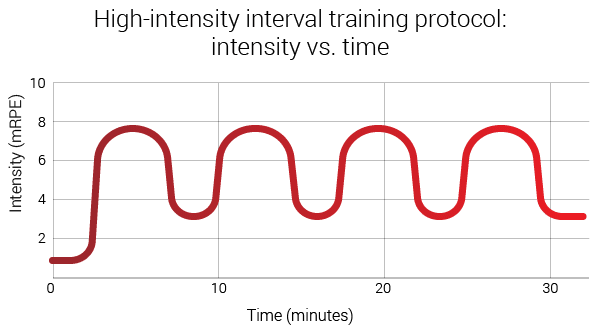
HIIT workouts are extremely challenging due to the long duration of the high-intensity intervals. Additionally, the rest intervals are at an intensity high enough to labour your breathing.
What is moderate-intensity continuous training?
Moderate Intensity Continuous Training is what most would consider the most traditional form of cardio. Going for a run or hopping on a bike and putting in a consistent effort for a longer duration of time is the goal of this training.
Because the duration of the workout is longer and there are no rest intervals, the overall intensity is also lower.
Generally, your breathing will become harder and deeper in MICT. It becomes a little bit more difficult to hold a conversation during this type of training, although you can still talk.
A common example of an MICT protocol:
- Continuous training for 30-60 minutes at an intensity of 2 - 5
Moderate-intensity continuous training: the average protocol and intensity levels tested:
- Average session duration = 40 minutes and 31.8 seconds
- Average session intensity = 4
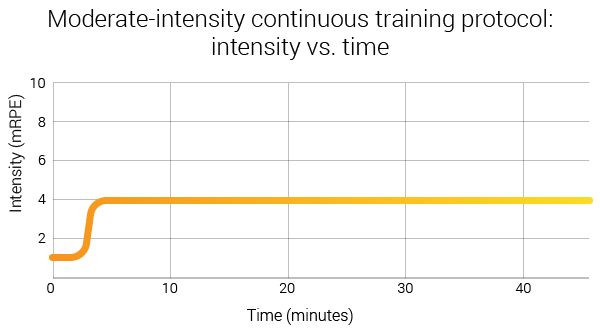
The traditional cardio we all know and love (or hate) is as simple and straightforward as possible. Exercise at a moderate intensity for a set period of time.
When we compare these three protocols together, it becomes abundantly clear just how drastic the differences are.

Sprint Interval Training, from my biased perspective, looks like the easiest form of exercise, even if it does require the highest level of intensity out of the three.
Results of the investigation
The objective of this investigation was to identify which form of cardio is the most effective at reducing body fat percentage and which one does it in the most time efficient manner.
The studies involved specific programmes that were classified as SIT, HIIT, or MICT.
The exercise regimens consisted of varying amounts of workouts per week, workout durations, etc. but all lasted an average of 9.8 weeks long.
Effectiveness was also measured with a single metric of body fat percentage.
Doing Sprint Interval Training reduced body fat percentage 40.70% more than High Intensity Interval Training and 91.83% more than Moderate Intensity Continuous Training
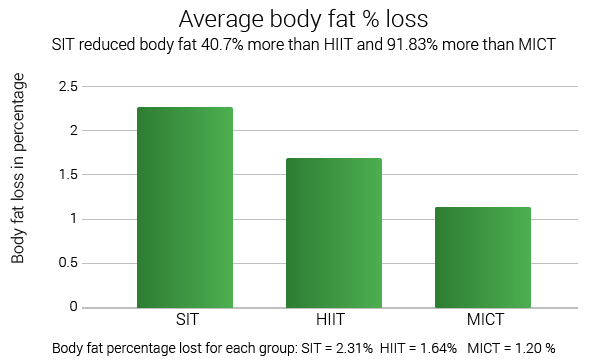
Each mode of exercise are effective at reducing body fat in their own right. However, SIT is the leading performer with a 2.31% body fat reduction, HIIT with a 1.64% reduction, and MICT with 1.2% reduction.
In comparison though, it is clear that SIT is the most effective form of cardio to burn fat. Having outperformed both HIIT (by 40.70%) and MICT (by 91.83%).
HIIT was the second most effective as this population of participants lost 1.64% of body fat in comparison to MICT’s 1.2%. Meaning HIIT was 36.34% more effective than MICT.
What is the most efficient form of cardio?
It’s clear that SIT is the most effective form of cardio when it comes to reducing body fat.
But which is the most efficient?
The average study lasted approximately 9.8 weeks.
Within those 9.8 weeks, we assessed efficiency by analysing the following metrics:
- Total time spent exercising
- Total time spent sprinting which only applies to HIIT and SIT (sprinting = sprints of SIT and the high-intensity intervals of HIIT)
- Average workout duration
SIT required 60.84% less overall time spent exercising than HIIT and 71.17% than MICT
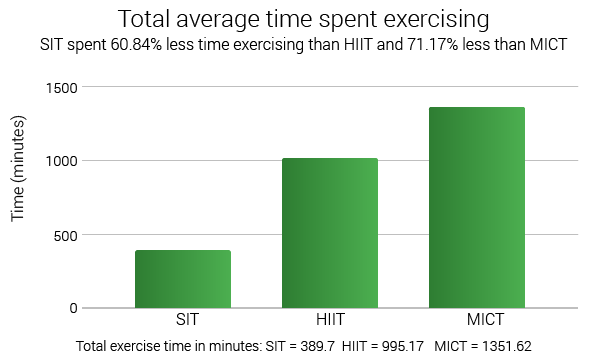
Over the 9.8 weeks, the SIT groups conducted a total of 389.7 minutes of exercise on average. These participants spent 60.84% less time exercising in comparison to HIIT (995.17 minutes over 9.8 weeks) and 71.17% less than MICT (1351.62 minutes over 9.8 weeks).
Making it clear that SIT is extremely time efficient as it required approximately only a third the time of HIIT to complete.
SIT workouts consisted of 81.46% less time sprinting than HIIT workouts
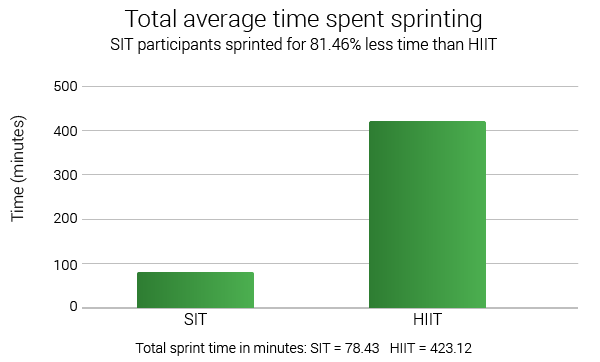
When comparing the amount of time spent doing sprints or cardio at the highest intensity within the protocol, the difference is drastic as well. Sprint Interval Training participants spent just over an hour sprinting where HIIT spent over 7 hours on average throughout the duration of these studies.
Overall, SIT spent 81.46% less time doing high-intensity work. The major difference being that the level of intensity was at its highest for SIT. This type of intensity training pushes what your body is physically capable of to its limits. Even though the amount of time is so much different, don’t mistake it for being easy.
SIT workouts were 44.75% shorter than HIIT workouts and 60.12% shorter than MICT
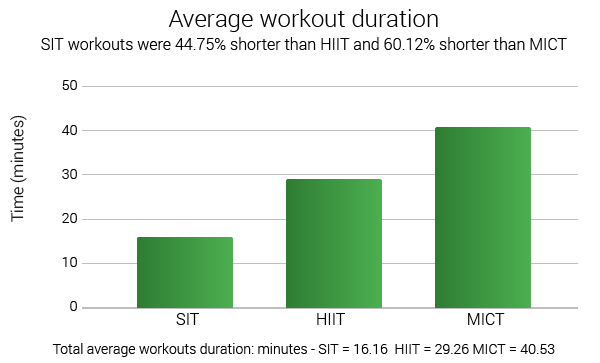
Although HIIT was shorter than the average MICT workout by about 11 minutes, it still was not as efficient as SIT. SIT workouts were 13.1 minutes shorter than HIIT and 24.37 minutes shorter than MICT.
This made SIT almost 50% more efficient on an individual workout basis in comparison to HIIT.
Why is SIT so effective and efficient?
This investigation has demonstrated that SIT outperforms other forms of cardio training when it comes to reducing body fat. Not only that but SIT also produces these results in almost half the time of HIIT.
But how is that even possible?
Your body is constantly communicating with itself through a wide variety of feedback loops trying to maintain a state of homeostasis. Think of homeostasis as your body’s internal “comfort zone”.
Remember Newton’s Third Law from your middle school science class? For every action, there is an equal and opposite reaction.
This applies directly to this comfort zone. As you push your body out of homeostasis through exercise, it has to react in an equal and opposite way in order to bring balance back to all interdependent systems within your body.
The greater the intensity, the more you are able to push your body out of homeostasis.
The benefits of increasing the intensity of your workout aren’t linear though. It can be better visualised as being exponential growth.

Where HIIT is operating at an intensity of "8" it is s
On the intensity scale, sprinting is a 10-out-of-10. This maximal intensity leads to pushing your body extremely far out of its' comfort zone.
Kickstarting the biological processes
By operating at this maximal intensity during SIT, you are producing the maximal response from your body which is what allows the duration of exercise to be so strikingly shorter than that of its counterparts.
How to implement SIT in your exercise routine?
When beginning Sprint Interval Training, you want to make sure you incorporate and apply it in a programme with progressive overload. This will help to ensure safety and allow you to train in a zone of maximum effectiveness as you progress.
The objective of programming is to go from a beginner in SIT, to being able to consistently workout 3 times a week where the protocol consists of 4 x 30-second sprints with 4 minutes of rest duration.
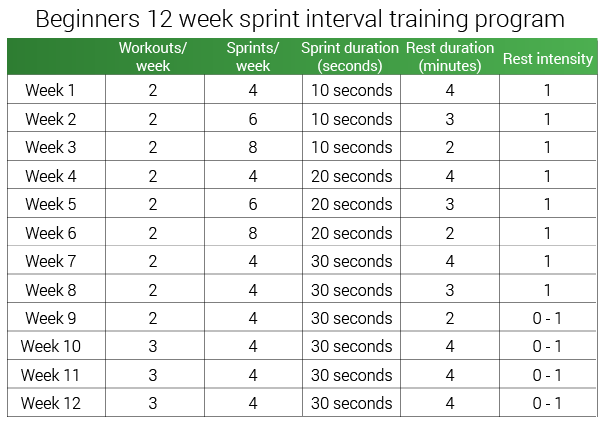
If you are a more advanced athlete with a great deal of experience in high-intensity exercise such as HIIT, you can simply start at Week 10. From there, as you see fit, increase the intensity by reducing the rest duration, increasing the sprint duration, or increasing the number of sprints per workout.
You should also make these increases in intervals of every 2-3 weeks and be sure to provide your body with the adequate rest that it needs. If you continue to show up to your workout still sore and struggling to give your maximum effort, then increase the number of rest days between workouts.
Great training shoes are a must for interval training
If you are one of the ones trying to lose that weight gained during quarantine, then you need to start with the proper footwear is always crucial. Some of the best training shoes can make a significant difference in your stability, comfort, and performance. It is important to match your shoe with the proper exercise as well. Weightlifting shoes are better suited for stationary exercises, like squatting. In comparison, the best CrossFit shoes will be significantly different and provide much more support for crosstraining purposes.
For those who don't want to spend top dollar on the best workout shoes just for interval training, there are tonnes of cheap training shoes that are rated just as well as expensive ones.
Every year, there are tonnes of new training shoes coming out from big brands like Nike, PUMA, and Reebok. But don't forget to check out smaller shoe brands as well. Companies like Vibram FiveFingers, Topo Athletic, and Vivobarefoot may have a much smaller offering but don't mistake that for a lack of quality.
Because of the intensity of SIT, it isn't suggested to do it every day. Instead, getting out for some vigorous walking is a great option. You can find the best walking shoes for you, whether they are shoes for all-day wear, travelling, or for work. There are even great shoes for diabetics and other foot conditions such as flat feet, overpronation, or even plantar fasciitis.
Works Cited:
1) Little JP, Langley J, Lee M, Myette-Côté E, Jackson G, Durrer C, Gibala MJ, Jung ME. Sprint exercise snacks: a novel approach to increase aerobic fitness. Eur J Appl Physiol. 2019 Mar 7.doi: 10.1007/s00421-019-04110-z. [Epub ahead of print] PubMed PMID: 30847639.
2) Moghaddam M, Estrada CA, Muddle TWD, Magrini MA, Jenkins NDM, Jacobson BH. Similar Anaerobic and Aerobic Adaptations After 2 High-Intensity Interval Training Configurations: 10 s: 5 s vs. 20 s: 10 s Work-to-Rest Ratio. J Strength Cond Res. 2019 Feb 27. doi: 10.1519/JSC.0000000000002939. [Epub ahead of print] PubMed PMID: 30829982.
3) Preobrazenski N, Bonafiglia JT, Nelms MW, Lu S, Robins L, LeBlanc C, Gurd BJ. Does blood lactate predict the chronic adaptive response to training: A comparison of traditional and talk test prescription methods. Appl Physiol Nutr Metab. 2019 Feb;44(2):179-186. doi: 10.1139/apnm-2018-0343. Epub 2018 Jul 30. PubMed PMID: 30058347.
4) Naves JPA, Viana RB, Rebelo ACS, de Lira CAB, Pimentel GD, Lobo PCB, de Oliveira JC, Ramirez-Campillo R, Gentil P. Effects of High-Intensity Interval Training vs. Sprint Interval Training on Anthropometric Measures and Cardiorespiratory Fitness in Healthy Young Women. Front Physiol. 2018 Dec 5;9:1738. doi: 10.3389/fphys.2018.01738. eCollection 2018. PubMed PMID: 30568598; PubMed Central PMCID: PMC6290642.
5) Islam H, Townsend LK, Hazell TJ. Excess Postexercise Oxygen Consumption and Fat Utilisation Following Submaximal Continuous and Supramaximal Interval Running. Res Q Exerc Sport. 2018 Dec;89(4):450-456. doi: 10.1080/02701367.2018.1513633. Epub 2018 Oct 16. PubMed PMID: 30325710.
6) Tong TK, Zhang H, Shi H, Liu Y, Ai J, Nie J, Kong Z. Comparing Time Efficiency of Sprint vs. High-Intensity Interval Training in Reducing Abdominal Visceral Fat in Obese Young Women: A Randomised, Controlled Trial. Front Physiol. 2018 Aug 3;9:1048. doi: 10.3389/fphys.2018.01048. eCollection 2018. PubMed PMID: 30123136; PubMed Central PMCID: PMC6085472.
7) Olney N, Wertz T, LaPorta Z, Mora A, Serbas J, Astorino TA. Comparison of Acute Physiological and Psychological Responses Between Moderate-Intensity Continuous Exercise and Three Regimes of High-Intensity Interval Training. J Strength Cond Res. 2018 Aug;32(8):2130-2138. doi: 10.1519/JSC.0000000000002154. PubMed PMID: 28737586.
8) Howden EJ, Sarma S, Lawley JS, Opondo M, Cornwell W, Stoller D, Urey MA, Adams-Huet B, Levine BD. Reversing the Cardiac Effects of Sedentary Ageing in Middle Age-A Randomised Controlled Trial: Implications For Heart Failure Prevention. Circulation. 2018 Apr 10;137(15):1549-1560. doi: 10.1161/CIRCULATIONAHA.117.030617. Epub 2018 Jan 8. PubMed PMID: 29311053; PubMed Central PMCID: PMC5893372.
9) Francois ME, Pistawka KJ, Halperin FA, Little JP. Cardiovascular benefits of combined interval training and post-exercise nutrition in type 2 diabetes. J Diabetes Complications. 2018 Feb;32(2):226-233. doi: 10.1016/j.jdiacomp.2017.10.002. Epub 2017 Nov 29. PubMed PMID: 29198993.
10) Schubert MM, Palumbo E, Seay RF, Spain KK, Clarke HE. Energy compensation after sprint- and high-intensity interval training.PLoS One. 2017 Dec 15;12(12):e0189590. doi: 10.1371/journal.pone.0189590. eCollection 2017. PubMed PMID: 29244836; PubMed Central PMCID: PMC5731706.
11) Shepherd SO, Cocks M, Meikle PJ, Mellett NA, Ranasinghe AM, Barker TA, Wagenmakers AJM, Shaw CS. Lipid droplet remodelling and reduced muscle ceramides following sprint interval and moderate-intensity continuous exercise training in obese males. Int J Obes (Lond). 2017 Dec;41(12):1745-1754. doi: 10.1038/ijo.2017.170. Epub 2017 Jul 24. PubMed PMID: 28736444.
12) Taylor J, Keating SE, Leveritt MD, Holland DJ, Gomersall SR, Coombes JS. Study protocol for the FITR Heart Study: Feasibility, safety, adherence, and efficacy of high intensity interval training in a hospital-initiated rehabilitation programme for coronary heart disease. Contemp Clin Trials Commun. 2017 Oct 13;8:181-191. doi: 10.1016/j.conctc.2017.10.002. eCollection 2017 Dec. PubMed PMID: 29696208; PubMed Central PMCID: PMC5898506.
13) Yan X, Eynon N, Papadimitriou ID, Kuang J, Munson F, Tirosh O, O'Keefe L, Griffiths LR, Ashton KJ, Byrne N, Pitsiladis YP, Bishop DJ. The gene SMART study: method, study design, and preliminary findings. BMC Genomics. 2017 Nov 14;18(Suppl 8):821. doi: 10.1186/s12864-017-4186-4. Review. PubMed PMID: 29143594; PubMed Central PMCID: PMC5688409.
14) Lloyd Jones MC, Morris MG, Jakeman JR. Impact of time and work:rest ratio matched sprint interval training programmes on performance: A randomised controlled trial. J Sci Med Sport. 2017 Nov;20(11):1034-1038. doi: 10.1016/j.jsams.2017.03.020. Epub 2017 Mar 31. PubMed PMID: 28410999.
15) Islam H, Townsend LK, McKie GL, Medeiros PJ, Gurd BJ, Hazell TJ. Potential involvement of lactate and interleukin-6 in the appetite-regulatory hormonal response to an acute exercise bout. J Appl Physiol (1985). 2017 Sep 1;123(3):614-623. doi: 10.1152/japplphysiol.00218.2017. Epub 2017 Jul 6. PubMed PMID: 28684587; PubMed Central PMCID: PMC5625078.
16)Keating SE, Johnson NA, Mielke GI, Coombes JS. A systematic review and meta-analysis of interval training versus moderate-intensity continuous training on body adiposity. Obes Rev. 2017 Aug;18(8):943-964. doi: 10.1111/obr.12536. Epub 2017 May 17. Review. PubMed PMID: 28513103.
17) Forbes SC, Sletten N, Durrer C, Myette-Côté É, Candow D, Little JP. Creatine Monohydrate Supplementation Does Not Augment Fitness, Performance, or Body Composition Adaptations in Response to Four Weeks of High-Intensity Interval Training in Young Females. Int J Sport Nutr Exerc Metab. 2017 Jun;27(3):285-292. doi: 10.1123/ijsnem.2016-0129. Epub 2016 Oct 21. PubMed PMID: 27768397.
18) Bonafiglia JT, Edgett BA, Baechler BL, Nelms MW, Simpson CA, Quadrilatero J, Gurd BJ. Acute upregulation of PGC-1α mRNA correlates with training-induced increases in SDH activity in human skeletal muscle. Appl Physiol Nutr Metab. 2017 Jun;42(6):656-666. doi: 10.1139/apnm-2016-0463. Epub 2017 Feb 2. PubMed PMID: 28177701.
19) MacInnis MJ, Gibala MJ. Physiological adaptations to interval training and the role of exercise intensity. J Physiol. 2017 May 1;595(9):2915-2930. doi: 10.1113/JP273196. Epub 2016 Dec 7. Review. PubMed PMID: 27748956; PubMed Central PMCID: PMC5407969.
20) Granata C, Oliveira RS, Little JP, Renner K, Bishop DJ. Sprint-interval but not continuous exercise increases PGC-1α protein content and p53 phosphorylation in nuclear fractions of human skeletal muscle. Sci Rep. 2017 Mar 10;7:44227. doi: 10.1038/srep44227. PubMed PMID: 28281651; PubMed Central PMCID: PMC5345041.
21) Hazell TJ, Townsend LK, Hallworth JR, Doan J, Copeland JL. Sex differences in the response of total PYY and GLP-1 to moderate-intensity continuous and sprint interval cycling exercise. Eur J Appl Physiol. 2017 Mar;117(3):431-440. doi: 10.1007/s00421-017-3547-7. Epub 2017 Feb 2. PubMed PMID: 28154977.
22) Lee CL, Hsu WC, Cheng CF. Physiological Adaptations to Sprint Interval Training with Matched Exercise Volume. Med Sci Sports Exerc. 2017 Jan;49(1):86-95. PubMed PMID: 27580145.
23) Hazell TJ, Islam H, Hallworth JR, Copeland JL. Total PYY and GLP-1 responses to submaximal continuous and supramaximal sprint interval cycling in men. Appetite. 2017 Jan 1;108:238-244. doi: 10.1016/j.appet.2016.10.006. Epub 2016 Oct 6. PubMed PMID: 27721013.
24) Bonafiglia JT, Rotundo MP, Whittall JP, Scribbans TD, Graham RB, Gurd BJ. Inter-Individual Variability in the Adaptive Responses to Endurance and Sprint Interval Training: A Randomised Crossover Study. PLoS One. 2016 Dec 9;11(12):e0167790. doi: 10.1371/journal.pone.0167790. eCollection 2016. PubMed PMID: 27936084; PubMed Central PMCID: PMC5147982.
25) Ramos JS, Dalleck LC, Borrani F, Mallard AR, Clark B, Keating SE, Fassett RG, Coombes JS. The effect of different volumes of high-intensity interval training on proinsulin in participants with the metabolic syndrome: a randomised trial. Diabetologia. 2016 Nov;59(11):2308-2320. doi: 10.1007/s00125-016-4064-7. Epub 2016 Aug 1. PubMed PMID: 27480182.
26) Tucker WJ, Angadi SS, Gaesser GA. Excess Postexercise Oxygen Consumption After High-Intensity and Sprint Interval Exercise, and Continuous Steady-State Exercise. J Strength Cond Res. 2016 Nov;30(11):3090-3097. PubMed PMID: 26950358.
27) Higgins S, Fedewa MV, Hathaway ED, Schmidt MD, Evans EM. Sprint interval and moderate-intensity cycling training differentially affect adiposity and aerobic capacity in overweight young-adult women. Appl Physiol Nutr Metab. 2016 Nov;41(11):1177-1183. Epub 2016 Aug 10. PubMed PMID: 27806634.
28) Pattyn N, Vanhees L, Cornelissen VA, Coeckelberghs E, De Maeyer C, Goetschalckx K, Possemiers N, Wuyts K, Van Craenenbroeck EM, Beckers PJ. The long-term effects of a randomised trial comparing aerobic interval versus continuous training in coronary artery disease patients: 1-year data from the SAINTEX-CAD study. Eur J Prev Cardiol. 2016 Jul;23(11):1154-64. doi: 10.1177/2047487316631200. Epub 2016 Feb 8. PubMed PMID: 26858279.
29) Martins C, Kazakova I, Ludviksen M, Mehus I, Wisloff U, Kulseng B, Morgan L, King N. High-Intensity Interval Training and Isocaloric Moderate-Intensity Continuous Training Result in Similar Improvements in Body Composition and Fitness in Obese Individuals. Int J Sport Nutr Exerc Metab. 2016 Jun;26(3):197-204. doi: 10.1123/ijsnem.2015-0078. Epub 2015 Oct 19. PubMed PMID: 26479856.
30) Devin JL, Sax AT, Hughes GI, Jenkins DG, Aitken JF, Chambers SK, Dunn JC, Bolam KA, Skinner TL. The influence of high-intensity compared with moderate-intensity exercise training on cardiorespiratory fitness and body composition in colorectal cancer survivors: a randomised controlled trial. J Cancer Surviv. 2016 Jun;10(3):467-79. doi: 10.1007/s11764-015-0490-7. Epub 2015 Oct 19. PubMed PMID: 26482384.
31) Gillen JB, Martin BJ, MacInnis MJ, Skelly LE, Tarnopolsky MA, Gibala MJ. Twelve Weeks of Sprint Interval Training Improves Indices of Cardiometabolic Health Similar to Traditional Endurance Training despite a Five-Fold Lower Exercise Volume and Time Commitment. PLoS One. 2016 Apr 26;11(4):e0154075. doi: 10.1371/journal.pone.0154075. eCollection 2016. PubMed PMID: 27115137; PubMed Central PMCID: PMC4846072.
32) Cocks M, Shaw CS, Shepherd SO, Fisher JP, Ranasinghe A, Barker TA, Wagenmakers AJ. Sprint interval and moderate-intensity continuous training have equal benefits on aerobic capacity, insulin sensitivity, muscle capillarisation and endothelial eNOS/NAD(P)Hoxidase protein ratio in obese men. J Physiol. 2016 Apr 15;594(8):2307-21. doi: 10.1113/jphysiol.2014.285254. Epub 2015 Feb 24. PubMed PMID: 25645978; PubMed Central PMCID: PMC4933110.
33) Elmer DJ, Laird RH, Barberio MD, Pascoe DD. Inflammatory, lipid, and body composition responses to interval training or moderate aerobic training. Eur J Appl Physiol. 2016 Mar;116(3):601-9. doi: 10.1007/s00421-015-3308-4. Epub 2015 Dec 31. PubMed PMID: 26721463.
34) Inoue A, Impellizzeri FM, Pires FO, Pompeu FA, Deslandes AC, Santos TM. Effects of Sprint versus High-Intensity Aerobic Interval Training on Cross-Country Mountain Biking Performance: A Randomised Controlled Trial. PLoS One. 2016 Jan 20;11(1):e0145298. doi: 10.1371/journal.pone.0145298. eCollection 2016. PubMed PMID: 26789124; PubMed Central PMCID: PMC4720373.
35) Sim AY, Wallman KE, Fairchild TJ, Guelfi KJ. Effects of High-Intensity Intermittent Exercise Training on Appetite Regulation. Med Sci Sports Exerc. 2015 Nov;47(11):2441-9. doi: 10.1249/MSS.0000000000000687. PubMed PMID: 25899101.
36) Fisher G, Brown AW, Bohan Brown MM, Alcorn A, Noles C, Winwood L, Resuehr H, George B, Jeansonne MM, Allison DB. High Intensity Interval- vs Moderate Intensity- Training for Improving Cardiometabolic Health in Overweight or Obese Males: A Randomised Controlled Trial. PLoS One. 2015 Oct 21;10(10):e0138853. doi: 10.1371/journal.pone.0138853. eCollection 2015. PubMed PMID: 26489022; PubMed Central PMCID: PMC4619258.
37) Shepherd SO, Wilson OJ, Taylor AS, Thøgersen-Ntoumani C, Adlan AM, Wagenmakers AJ, Shaw CS. Low-Volume High-Intensity Interval Training in a Gym Setting Improves Cardio-Metabolic and Psychological Health. PLoS One. 2015 Sep 24;10(9):e0139056. doi: 10.1371/journal.pone.0139056. eCollection 2015. PubMed PMID: 26402859; PubMed Central PMCID: PMC4581708.
38) Kavaliauskas M, Aspe RR, Babraj J. High-Intensity Cycling Training: The Effect of Work-to-Rest Intervals on Running Performance Measures. J Strength Cond Res. 2015 Aug;29(8):2229-36. doi: 10.1519/JSC.0000000000000868. PubMed PMID: 26203737.
39) Rønnestad BR, Hansen J, Vegge G, Tønnessen E, Slettaløkken G. Short intervals induce superior training adaptations compared with long intervals in cyclists - an effort-matched approach. Scand J Med Sci Sports. 2015 Apr;25(2):143-51. doi: 10.1111/sms.12165. Epub 2014 Jan 1. PubMed PMID: 24382021.
40) Stensvold D, Viken H, Rognmo Ø, Skogvoll E, Steinshamn S, Vatten LJ, Coombes JS, Anderssen SA, Magnussen J, Ingebrigtsen JE, Fiatarone Singh MA, Langhammer A, Støylen A, Helbostad JL, Wisløff U. A randomised controlled study of the long-term effects of exercise training on mortality in elderly people: study protocol for the Generation 100 study. BMJ Open. 2015 Feb 12;5(2):e007519. doi: 10.1136/bmjopen-2014-007519. PubMed PMID: 25678546; PubMed Central PMCID: PMC4330327.
41) Nalcakan GR. The Effects of Sprint Interval vs. Continuous Endurance Training on Physiological And Metabolic Adaptations in Young Healthy Adults. J Hum Kinet. 2014 Dec 30;44:97-109. doi: 10.2478/hukin-2014-0115. eCollection 2014 Dec 9. PubMed PMID: 25713670; PubMed Central PMCID: PMC4327385.
42) Sasaki H, Morishima T, Hasegawa Y, Mori A, Ijichi T, Kurihara T, Goto K. 4 weeks of high-intensity interval training does not alter the exercise-induced growth hormone response in sedentary men. Springerplus. 2014 Jul 2;3:336. doi: 10.1186/2193-1801-3-336. eCollection 2014. PubMed PMID: 25806146; PubMed Central PMCID: PMC4363223.
43) Scribbans TD, Edgett BA, Vorobej K, Mitchell AS, Joanisse SD, Matusiak JB, Parise G, Quadrilatero J, Gurd BJ. Fibre-specific responses to endurance and low volume high intensity interval training: striking similarities in acute and chronic adaptation. PLoS One. 2014 Jun 5;9(6):e98119. doi: 10.1371/journal.pone.0098119. eCollection 2014. PubMed PMID: 24901767; PubMed Central PMCID: PMC4047011.
44) Mohr M, Nordsborg NB, Lindenskov A, Steinholm H, Nielsen HP, Mortensen J, Weihe P, Krustrup P. High-intensity intermittent swimming improves cardiovascular health status for women with mild hypertension. Biomed Res Int. 2014;2014:728289. doi: 10.1155/2014/728289. Epub 2014 Apr 10. PubMed PMID: 24812628; PubMed Central PMCID: PMC4000940.
45) Boer PH, Meeus M, Terblanche E, Rombaut L, Wandele ID, Hermans L, Gysel T, Ruige J, Calders P. The influence of sprint interval training on body composition, physical and metabolic fitness in adolescents and young adults with intellectual disability: a randomised controlled trial. Clin Rehabil. 2014 Mar;28(3):221-31. doi: 10.1177/0269215513498609. Epub 2013 Aug 20. PubMed PMID: 23963438.
46) Gist NH, Fedewa MV, Dishman RK, Cureton KJ. Sprint interval training effects on aerobic capacity: a systematic review and meta-analysis. Sports Med. 2014 Feb;44(2):269-79. doi: 10.1007/s40279-013-0115-0. Review. PubMed PMID: 24129784.
47) Keating SE, Machan EA, O'Connor HT, Gerofi JA, Sainsbury A, Caterson ID, Johnson NA. Continuous exercise but not high intensity interval training improves fat distribution in overweight adults. J Obes. 2014;2014:834865. doi: 10.1155/2014/834865. Epub 2014 Jan 19. PubMed PMID: 24669314; PubMed Central PMCID: PMC3942093.
48) Lunt H, Draper N, Marshall HC, Logan FJ, Hamlin MJ, Shearman JP, Cotter JD, Kimber NE, Blackwell G, Frampton CM. High intensity interval training in a real world setting: a randomised controlled feasibility study in overweight inactive adults, measuring change in maximal oxygen uptake. PLoS One. 2014 Jan 13;9(1):e83256. doi: 10.1371/journal.pone.0083256. eCollection 2014. Erratum in: PLoS One. 2014;9(3):e92651. PubMed PMID: 24454698; PubMed Central PMCID: PMC3890270.
49) Sloth M, Sloth D, Overgaard K, Dalgas U. Effects of sprint interval training on VO2max and aerobic exercise performance: A systematic review and meta-analysis. Scand J Med Sci Sports. 2013 Dec;23(6):e341-52. doi: 10.1111/sms.12092. Epub 2013 Jul 25. Review. PubMed PMID: 23889316.
50) Boyd JC, Simpson CA, Jung ME, Gurd BJ. Reducing the intensity and volume of interval training diminishes cardiovascular adaptation but not mitochondrial biogenesis in overweight/obese men. PLoS One. 2013 Jul 5;8(7):e68091. doi: 10.1371/journal.pone.0068091. Print 2013. PubMed PMID: 23861854; PubMed Central PMCID: PMC3702554.
51) Shepherd SO, Cocks M, Tipton KD, Ranasinghe AM, Barker TA, Burniston JG, Wagenmakers AJ, Shaw CS. Sprint interval and traditional endurance training increase net intramuscular triglyceride breakdown and expression of perilipin 2 and 5. J Physiol. 2013 Feb 1;591(3):657-75. doi: 10.1113/jphysiol.2012.240952. Epub 2012 Nov 5. PubMed PMID: 23129790; PubMed Central PMCID: PMC3577544.
52) Gosselin LE, Kozlowski KF, DeVinney-Boymel L, Hambridge C. Metabolic response of different high-intensity aerobic interval exercise protocols. J Strength Cond Res. 2012 Oct;26(10):2866-71. PubMed PMID: 22124355.
53) Corte de Araujo AC, Roschel H, Picanço AR, do Prado DM, Villares SM, de Sá Pinto AL, Gualano B. Similar health benefits of endurance and high-intensity interval training in obese children. PLoS One. 2012;7(8):e42747. doi: 10.1371/journal.pone.0042747. Epub 2012 Aug 6. PubMed PMID: 22880097; PubMed Central PMCID: PMC3412799.
54) Sijie T, Hainai Y, Fengying Y, Jianxiong W. High intensity interval exercise training in overweight young women. J Sports Med Phys Fitness. 2012 Jun;52(3):255-62. PubMed PMID: 22648463.
Nybo L, Sundstrup E, Jakobsen MD, Mohr M, Hornstrup T, Simonsen L, Bülow J, Randers MB, Nielsen JJ, Aagaard P, Krustrup P. High-intensity training versus traditional exercise interventions for promoting health. Med Sci Sports Exerc. 2010 Oct;42(10):1951-8. doi: 10.1249/MSS.0b013e3181d99203. PubMed PMID: 20195181.
55) Schjerve IE, Tyldum GA, Tjønna AE, Stølen T, Loennechen JP, Hansen HE, Haram PM, Heinrich G, Bye A, Najjar SM, Smith GL, Slørdahl SA, Kemi OJ, Wisløff U. Both aerobic endurance and strength training programmes improve cardiovascular health in obese adults. Clin Sci (Lond). 2008 Nov;115(9):283-93. doi: 10.1042/CS20070332. PubMed PMID: 18338980.
56) Trapp EG, Chisholm DJ, Freund J, Boutcher SH. The effects of high-intensity intermittent exercise training on fat loss and fasting insulin levels of young women. Int J Obes (Lond). 2008 Apr;32(4):684-91. doi: 10.1038/sj.ijo.0803781. Epub 2008 Jan 15. PubMed PMID: 18197184.
57) Burgomaster KA, Howarth KR, Phillips SM, Rakobowchuk M, Macdonald MJ, McGee SL, Gibala MJ. Similar metabolic adaptations during exercise after low volume sprint interval and traditional endurance training in humans. J Physiol. 2008 Jan 1;586(1):151-60. Epub 2007 Nov 8. PubMed PMID: 17991697; PubMed Central PMCID: PMC2375551.
58) Thomas TR, Adeniran SB, Etheridge GL. Effects of different running programmes on VO2 max, percent fat, and plasma lipids. Can J Appl Sport Sci. 1984 Jun;9(2):55-62. PubMed PMID: 6733833.
59) Eimarieskandari R, Zilaeibouri S, Zilaeibouri M, Ahangarpour A. Comparing two modes of exercise training with different intensity on body composition in obese young girls. Ovidius University Annals, Series Physical Education & Sport/Science, Movement & Health. 2012; 12: 473–478.
60) Koubaa A, Trabelsi H, Masmoudi L et al. Effect of Intermittent and continuous training on body composition cardio-respiratory fitness and lipid profile in obese adolescents. ISORPHR. 2013; 3: 31–37.
61) Zhang H, Tong TK, Qiu W, Wang J, Nie J, He Y. Effect of high-intensity interval training protocol on abdominal fat reduction in overweight chinese women: a randomised controlled trial. Kinesiology. 2015; 47: 57–66
62) Higgins S, Fedewa MV, Hathaway ED, Schmidt MD, Evans EM. Sprint interval and moderate-intensity cycling training differentially affect adiposity and aerobic capacity in overweight young-adult women. App Physiol Nutr Metab. 2016; 41: 1177–1183.
63) Hwang CL, Yoo JK, Kim HK et al. Novel all-extremity highintensity interval training improves aerobic fitness, cardiac function and insulin resistance in healthy older adults. Exp Gerontol. 2016; 82: 112–119.
64) Panissa VLG, Alves ED, Salermo GP, Franchini E, Takito MY. Can short-term high-intensity intermittent training reduce adiposity? Sport Sci Health. 2016; 12: 99–104
65) Gillen JB, Martin BJ, MacInnis MJ, Skelly LE, Tarnopolsky MA, Gibala MJ. Twelve weeks of sprint interval training improves indices of cardiometabolic health similar to traditional endurance training despite a five-fold lower exercise
66) Ramos JS, Dalleck LC, Borrani F et al. The effect of different volumes of high-intensity interval training on proinsulin in participants with the metabolic syndrome: a randomised trial. Diabetologia. 2016; 59: 2308–2320.
67) Cocks M, Shaw CS, Shepherd SO, et al. High intensity interval and endurance training are equally effective in increasing muscle microvascular density and eNOS content in sedentary males. J Physiol. 2012. doi:10.1113/jphysiol.2012.239566.
68) Carr N. The effect of high-intensity interval training on VO2peak and performance in trained high school rowers [thesis]. Tempe: Arizona State University; 2011.
69) Iaia FM, Hellsten Y, Nielsen JJ, et al. Four weeks of speed endurance training reduces energy expenditure during exercise and maintains muscle oxidative capacity despite a reduction in training volume. J Appl Physiol. 2009;106(1):73–80. doi:10. 1152/japplphysiol.90676.2008.
70) Burgomaster KA, Howarth KR, Phillips SM, et al. Similar metabolic adaptations during exercise after low volume sprint interval and traditional endurance training in humans. J Physiol Lond. 2008;586(1):151–60. doi:10.1113/jphysiol.2007.142109.
71) MacPherson RE, Hazell TJ, Olver TD, et al. Run sprint interval training improves aerobic performance but not maximal cardiac output. Med Sci Sports Exerc. 2011;43(1):115–22. doi:10.1249/ MSS.0b013e3181e5eacd.
72) Rowan AE. Short duration high-intensity interval training improves aerobic conditioning of female college football players. Int J Exerc Sci. 2012;5(3):232–8.
73) Sandvei M, Jeppesen PB, Stoen L, et al. Sprint interval running increases insulin sensitivity in young healthy subjects. Arch Physiol Biochem. 2012;118(3):139–47. doi:10.3109/13813455. 2012.677454.
74) Laursen PB, Shing CM, Peake JM, et al. Interval training programme optimisation in highly trained endurance cyclists. Med Sci Sport Exerc. 2002;34(11):1801–7.
75) Barnett C, Carey M, Proietto J, et al. Muscle metabolism during sprint exercise in man: inï¬uence of sprint training. J Sci Med Sport. 2004;7(3):314–22.
